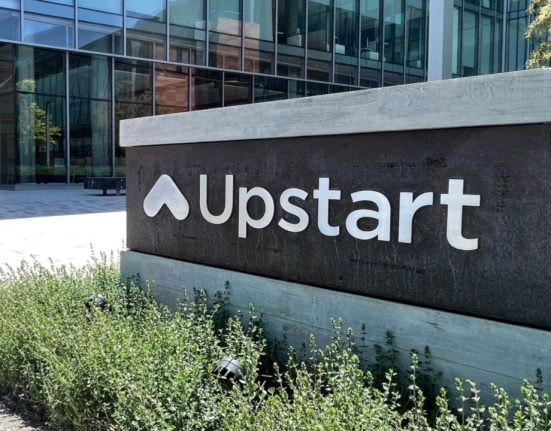A trip to the grocery store or gas pump shows how much the cost of basic necessities has risen in recent years. Data published by Statistia shows inflation at 3.24% as of February 2024. That’s a far cry from 9.1% in June 2022, but up substantially from the pandemic era.
Americans are also seeing elevated prices in the housing and automotive markets, which can make major life changes such as moving more challenging. Plus, federal student loan payments resumed in Fall 2023. According to a recent Harris Poll, 59% of Americans said they are worried they will never be able to own a home, while 61% feel priced out of the market.
“People’s sense of safety has been shattered by the pandemic and what we call the stacked crisis — pandemic, war, inflation, climate disasters, and more,” Libby Rodney, chief strategy officer and futurist at The Harris Poll, said in a report published by PorchGroupMedia.com. “This data shows that not only do people feel priced out of the market, but areas that people live, especially Millennials, are so expensive that they feel barely livable.”
It might leave you wondering what it takes to afford a house, a car, student loan payments, and basic living needs in today’s economic climate.
Of course, the answer varies widely depending on where you want to live, how much student loan debt you have left, and the type of car you want to drive.
GOBankingRates used the loan payment calculator at FinAid.com to run the numbers on average costs to determine just how much money the average American needs to live an average life.
Average Housing Costs
Average housing prices have risen by 3.6% in the past year, according to real estate listing service Zillow.com, with the average home value at $347,716 in April 2024.
The home price only paints a portion of the picture when it comes to housing affordability, though. Your mortgage payment includes principal on the loan balance, interest, property taxes, and homeowners insurance. Zillow recently reported that the average home mortgage payment is now $2,200 per month after putting 10% down. That’s a 96% increase over the past few years.
Cost to Buy a New Car
With interest rates still relatively high and the price of new cars falling slowly, it may not be a prime time to buy a new car. But if factors are forcing your hand, you’ll pay an average of $49,096, according to Cars.com. That’s down from the $50,000+ average MSRP we saw in August 2023, but it’s still a significant investment.
If you need to finance that vehicle, you could expect an interest rate of more than 7%, which is the national average according to Experian. You might find rates as low as 3% through a local credit union, but that’s not typical.
Let’s assume you don’t put anything down on the car other than taxes, license, and registration, and take out a five-year loan at 7.18%. You’d pay $976.65 per month, not counting car insurance and gas.
Student Loan Debt Statistics
Students in school for 2021 – 2022 borrowed an average of $29,400 to fund their bachelor’s degree, according to College Board data. But across the U.S., student loan borrowers carry an average of $38,290 in debt, according to the Experian credit bureau.
This money comes at a high cost. The interest rate for Federal student loans currently sits at 8.02% for the 2023 – 2024 academic year. However, if you’re factoring in existing student loan debt, the average across the country for borrowers since 2006 is just 6%, and 5.50% for undergraduates, according to EducationData.org.
With this in mind, if you’re still paying off student loan payments, you could spend as much as $424.69 per month on your 10-year loan at 6%.
Average Cost of Living
So far, we’re looking at more than $2,700 just to pay for your housing, car, and keep your student loan payments up to date. The Ramsey Solutions blog used Bureau of Labor Statistics data and broke down the average cost-of-living in the U.S. based on categories.
Let’s add up these costs, not counting education, transportation, or housing, to find the average cost of living.
Food: $779
FICA taxes and other insurance (not counting healthcare): $729
Health care (health insurance premiums and out-of-pocket costs): $488
Entertainment: $288
Apparel and services: $162
Miscellaneous: $246
If we add up these expenses, the total cost comes to $2,692. But RamseySolutions.com didn’t include utilities like gas, water, and electric, since the BLS includes those costs with housing. That’s another $429.33 per month, according to Forbes.
And your smartphone bill? While you might pay more or less, CNBC.com reported that the average household pays $144 per month.
That means the average cost just to survive is $3,265.33, plus $2,692 for housing, transportation, and student loan debt. We didn’t factor credit card debt into this report, although many Americans carry revolving credit balances from month to month.
How Much Do You Need to Live? What’s The Magic Number?
The average American needs $5,957.33 per month to cover the expenses above, an annual salary of $71,488. That’s without putting any money into retirement savings, splurging on vacations, or building an emergency fund.
The U.S. Bureau of Labor reported that the average U.S. salary in Q4 2023 was just $59,384. Of course, there are ways to cut costs, including buying an older, less expensive car or moving to a region with a lower cost of living. If you maintain a high credit score, you can snag lower interest rates on loans, as well, which might make the lifestyle you want to achieve more affordable.
More From GOBankingRates
Source link







